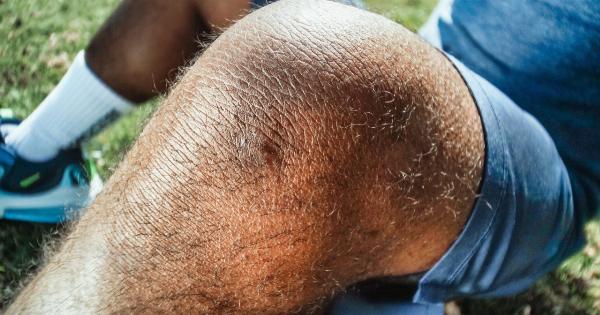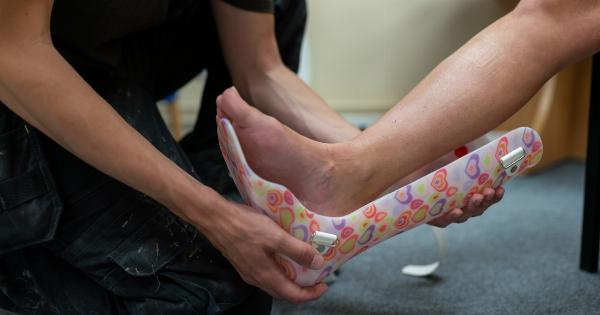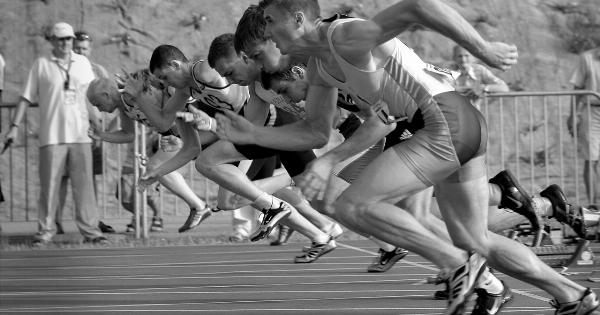Running is a popular form of exercise that offers numerous benefits, including improved cardiovascular health, weight management, and stress reduction. However, like any high-impact activity, running poses certain risks, especially to the knees.
The repetitive strain and impact on the knee joints can lead to various injuries and conditions. In this article, we will explore the potential risks associated with running and provide tips on how to minimize them.
1. Patellofemoral Pain Syndrome
Patellofemoral Pain Syndrome, also known as runner’s knee, is a common condition among runners. It causes pain around or underneath the kneecap, particularly during activities that involve bending the knee, such as running or squatting.
Overuse, muscle imbalance, inadequate stretching, or improper footwear can contribute to this condition. Gradually increasing training intensity, wearing appropriate shoes, and incorporating strength and flexibility exercises can help prevent and manage runner’s knee.
2. Iliotibial Band Syndrome
Iliotibial Band Syndrome (ITBS) occurs when the iliotibial band, a thick band of connective tissue that runs along the outer side of the thigh, becomes tight and inflamed. It commonly causes pain on the outer knee or hip while running.
Factors such as running on uneven surfaces, tight muscles, or improper footwear can contribute to the development of ITBS. Regular stretching, strength training exercises, and using proper running form can help prevent this syndrome.
3. Meniscus Tears
The meniscus is a piece of cartilage in the knee that acts as a shock absorber. The repetitive stress from running can potentially lead to meniscus tears. Symptoms may include knee pain, swelling, and limited range of motion.
It is crucial to rest, apply ice, and seek medical attention if a meniscus tear is suspected. Rehabilitation exercises and, in severe cases, surgery may be required to restore knee function.
4. Anterior Cruciate Ligament (ACL) Injuries
The ACL is one of the major ligaments in the knee that provides stability. High-impact activities, sudden stops or changes in direction, and improper landing techniques can lead to ACL injuries.
The tearing of the ACL is typically accompanied by a popping sound, severe pain, and swelling. Surgery is often necessary to repair a torn ACL, followed by extensive rehabilitation to regain knee strength and stability.
5. Cartilage Damage
The repetitive pounding of running can cause damage to the articular cartilage, the smooth tissue covering the ends of the bones in the knees. Over time, this can lead to cartilage degeneration, resulting in pain, stiffness, and limited mobility.
Engaging in low-impact exercises, such as swimming or cycling, can help reduce the strain on the knees and minimize cartilage damage.
6. Stress Fractures
Stress fractures are small cracks in the bones that develop due to repetitive stress on the legs and feet. Long-distance runners and those who rapidly increase training intensity are particularly susceptible to stress fractures.
Common sites for stress fractures include the tibia (shinbone) and metatarsal bones in the foot. Rest, proper nutrition, and gradual training progression are essential to avoiding stress fractures.
7. Patellar Tendinitis
Patellar tendinitis, also known as jumper’s knee, is an inflammation of the tendon that connects the patella (kneecap) to the shinbone.
It causes pain and tenderness just below the kneecap, often worsening during activities that involve jumping or running. Excessive training, poor flexibility, and muscular imbalances can contribute to this condition. Rest, ice, stretching, and strengthening exercises are essential for recovering from patellar tendinitis.
8. Shin Splints
Shin splints are characterized by pain along the front edge of the shinbone (tibia). They commonly occur in runners, particularly those who have recently intensified or changed their training routine.
Shin splints can result from overpronation, improper footwear, inadequate stretching, or running on hard surfaces. Rest, ice, proper shoe selection, and gradually increasing training intensity can help prevent and heal shin splints.
9. Ankle Sprains
Running on uneven terrain or encountering obstacles while running can increase the risk of ankle sprains. Ankle sprains happen when the ligaments that support the ankle are stretched or torn.
Proper warm-up, strengthening exercises, and wearing supportive footwear can reduce the likelihood of ankle sprains. If an ankle sprain occurs, immediate rest, ice, compression, and elevation (R.I.C.E) should be applied.
10. Osteoarthritis
Osteoarthritis is a degenerative joint disease that can affect the knees, among other joints. While running itself does not cause osteoarthritis, the repetitive stress on the knees can accelerate its development.
Factors such as age, previous injuries, and genetics may increase the risk. Engaging in low-impact exercises and maintaining a healthy weight can help manage osteoarthritis and reduce knee pain.





























